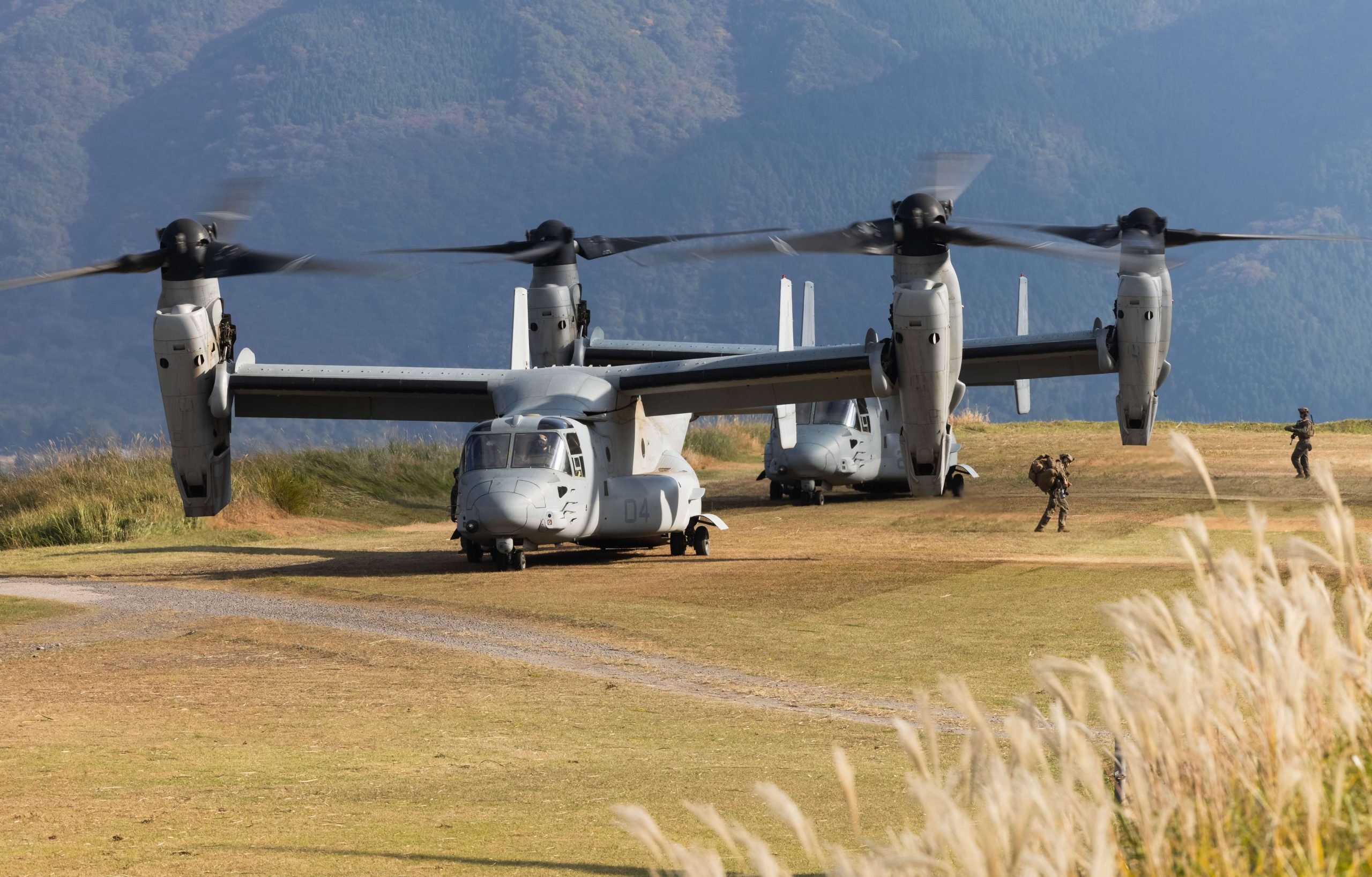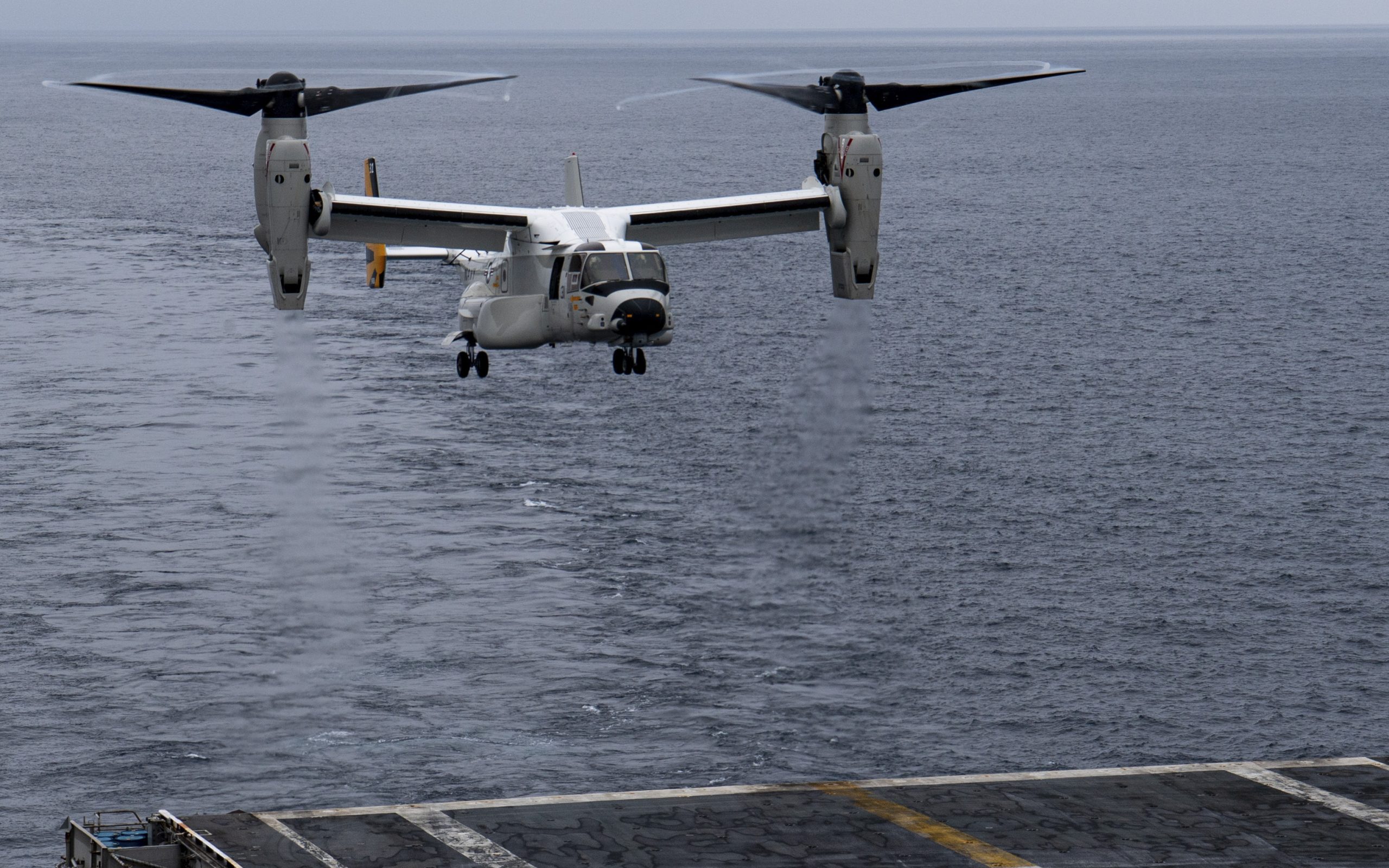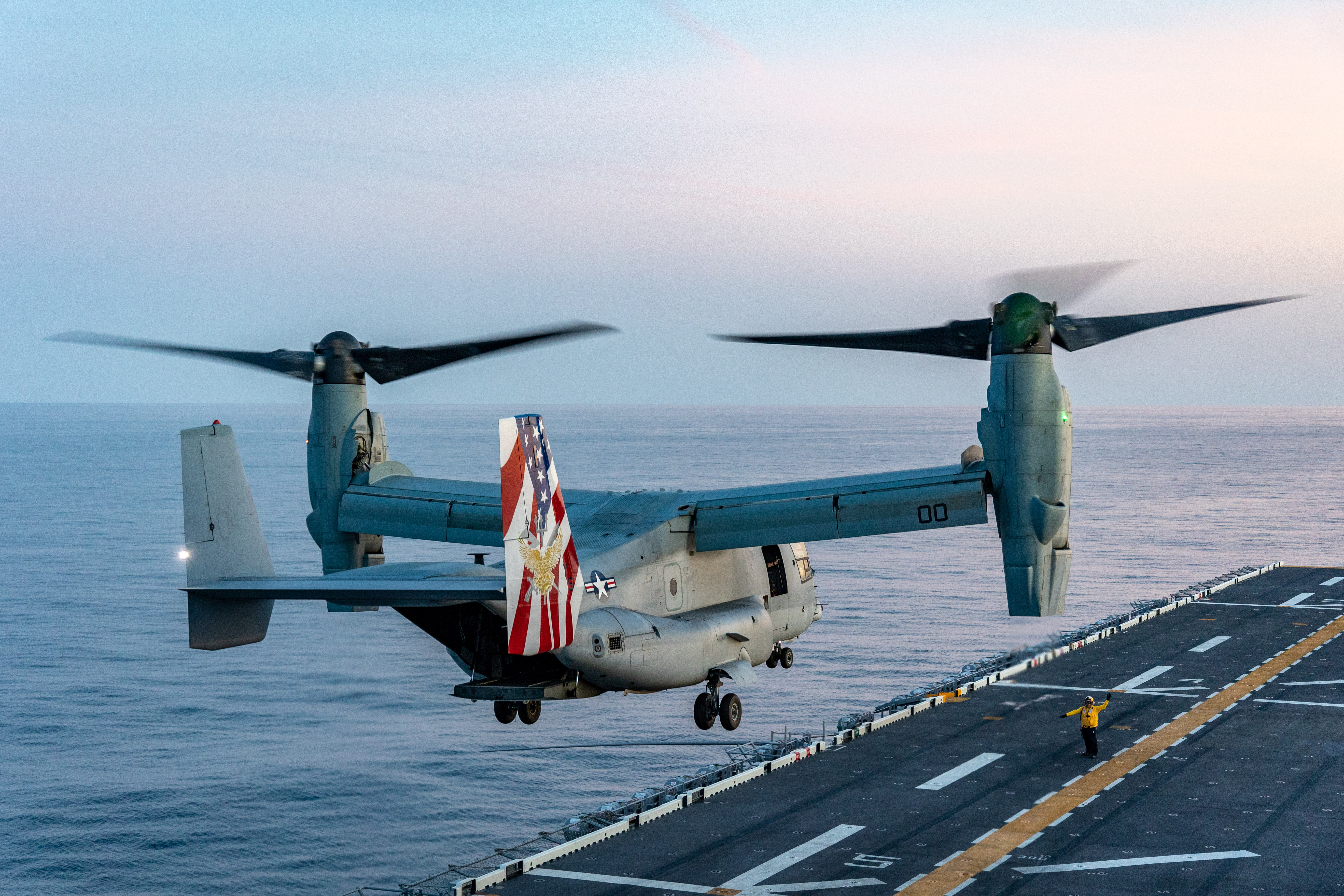
After more than three months probing the fatal V-22 Osprey crash that killed eight airmen off the coast of Japan, investigators say they know what failed aboard the Air Force tilt-rotor, but they still don’t know why.
Officials from the joint program office wouldn’t specify the component that failed aboard the Air Force Special Operations CV-22 on Nov. 29.
“I can’t talk about what the exact component is, but [what] I will tell you is we have a very high confidence that we understand what component failed and how it failed,” V-22 joint program office manager Col. Brian Taylor told reporters this week.
“What we are still working on is the ‘why’ and so that it’s still in the hands of the investigation.”
The Air Force Special Operations Command CV-22 that crashed during a training mission, GUNDAM 22, was submerged for almost a month while the Navy and Air Force worked to recover the Osprey. The corrosion the aircraft suffered has hindered the multiple investigations that are trying to understand why the unspecified component failed, Taylor said.
“The mishap is actually still under investigation, and there’ve been two investigations that have been stood up by the Air Force Special Operations Command – the safety investigation board and the accident investigation board,” Taylor said.
But based on the initial data gathered by Air Force investigators, AFSOC, the Navy and Marine Corps have determined the range of ways the unspecified part can fail and have built-in protections for maintenance and flight procedures to prevent the component failure.
“The mitigation that we’re putting in place really addresses this one particular component and how it operates inside of the aircraft,” Taylor said.
“The intent of these mitigations is to enable this component to continue to do its job within the overall aircraft but to do it with a little bit more of a margin of safety.”

While NAVAIR would not detail the failure the Air Force investigators identified, Marine Corps assistant deputy commandant for aviation Brig. Gen. Richard Joyce said it was separate from the “hard clutch engagement” fault responsible for at least one Marine Corps fatal MV-22B crash. The Marines found that replacing a gearing component before the aircraft reaches 800 hours of service life mitigates the issue, but like the fault in the Air Force CV-22, the service doesn’t know why.
The tilt-rotor Osprey is one of the most complex aircraft in the U.S. inventory due to the unique drive system that allows the aircraft to take off and land like a helicopter, but rotate its props 90 degrees and fly like a fixed-wing aircraft.
The requirements for the V-22 were the result of the failed 1980 attempt to rescue American embassy employees who were held hostage in Iran. Marine Corps and Air Force requirements for an aircraft to transport and recover troops at long ranges drove the complex drive system for the Ospreys.
As a result, the extended range of the MV-22B has become integral to how the Marines have structured their amphibious operations, and the lapse capability has pushed other aircraft like the CH-53E heavy-lift helicopters to fill the while the 348 Marine aircraft across 15 active and two reserve MV-22B squadrons are grounded.
“When you go from 91 days of no flight operations to suddenly a return to flight, you have to be very, very deliberate,” Joyce said.
Joyce said it would take about 30 days for Marine Corps squadrons to return to basic proficiency after a battery of maintenance and flight refreshers. Given the length of the grounding, it could be late summer before the entire force can return to an operational status, according to the service.
For example, it’s unclear whether the 15th Marine Expeditionary Unit will take MV-22Bs aboard the Boxer Amphibious Ready Group when it deploys later this year, Joyce told reporters.
USS Somerset (LPD-25), part of the Boxer ARG, deployed in January while USS Boxer (LHD-4) and USS Harpers Ferry (LSD-49) are still at the pier in San Diego, Calif.

“There is not an answer right now, but they are looking at it and that is, frankly, one of the most pressing decisions that has to get made,” Joyce said.
For the Navy, it could take several months for its fleet of CMV-22Bs to fully assume the carrier onboard delivery mission that requires lengthy overwater flights, Naval Air Forces commander Vice Adm. Daniel Cheever told reporters this week.
Until the CMV-22Bs are cleared for the COD mission, U.S. West Coast deployed aircraft carriers are relying on the legacy C-2A Greyhound for logistics resupply.
As the Navy, Marine Corps and Air Force prepare to return the Ospreys to flight, at least one member of Congress has found the Pentagon’s findings insufficient to allow V-22s back in the air.
“DoD is lifting the Osprey grounding order despite not providing the Oversight Committee and the American people answers about the safety of this aircraft. The House Oversight Committee has yet to receive adequate information requested from DoD as part of our ongoing investigation launched months ago into the safety and performance of the Osprey aircraft,” House Oversight and Accountability Committee chair Rep. James Comer (R-Ky.) said in a Wednesday statement.
“Serious concerns remain such as accountability measures put in place to prevent crashes, a general lack of transparency, how maintenance and operational upkeep is prioritized, and how DoD assesses risks.”





